
Table of Contents
In the dynamic realm of B2B marketing, whitepaper creation has emerged as a powerful tool for establishing thought leadership, generating leads, and driving business growth. But with countless businesses vying for attention, crafting a compelling whitepaper that stands out from the crowd is no easy feat. So, the question remains: how can you transform a mere concept into a published masterpiece that captivates your audience and propels your marketing efforts? This comprehensive guide is here to help you navigate the intricate process of whitepaper creation, from inception to publication.
First, let’s agree on one thing: creating a compelling whitepaper is not just about churning out a lengthy document filled with industry jargon. It’s about providing valuable, actionable insights that resonate with your target audience. According to a study by DemandGen Report, 76% of B2B marketers say that whitepapers are one of the top three most effective content marketing tactics. But with great power comes great responsibility. To truly harness the potential of whitepapers, you must understand the art of content development and the science behind B2B marketing.
Now, let’s make a promise. By the end of this article, you will have a clear roadmap for creating whitepapers that engage, educate, and inspire your readers. We’ll delve into the intricacies of research, writing, design, and distribution, ensuring that every step of your whitepaper journey is covered. Whether you’re a seasoned marketer or a newcomer to the world of whitepapers, this guide promises to equip you with the knowledge and confidence to create compelling content that drives results.
But before we dive into the nitty-gritty of whitepaper creation, let’s take a sneak peek at what lies ahead. In the following sections, we’ll explore the importance of understanding your audience and defining your topic. We’ll then guide you through the process of conducting thorough research, structuring your content, and crafting a compelling narrative. We’ll also delve into the often-overlooked aspects of design and formatting, ensuring your whitepaper is not only informative but also visually appealing. Finally, we’ll provide insights into distributing your whitepaper and measuring its success. So, are you ready to embark on this transformative journey from concept to publication? Let’s get started!
Mastering Whitepaper Creation: A Strategic Approach to Content Development
Embarking on the journey of mastering whitepaper creation is akin to navigating a strategic game of chess, where each move, or in this case, each word, carries profound implications. A well-crafted whitepaper is not merely a document; it’s a persuasive tool that can transform industries, spark revolutions, and even launch multi-billion dollar companies. It’s the silent salesman, the relentless advocate, and the beacon of innovation, all rolled into one. To master this art, one must first understand the canvas
- the whitepaper itself. It’s a blank slate, a tabula rasa, waiting to be filled with insights, data, and compelling narratives. But it’s not just about the content; it’s about the strategy. It’s about understanding your audience, their pain points, their aspirations, and their biases. It’s about crafting a narrative that resonates, that educates, and that ultimately, persuades. It’s about the art of storytelling, the science of data presentation, and the finesse of persuasive writing. It’s about creating a document that doesn’t just inform, but inspires action. So, let’s dive into the world of whitepaper creation, armed with curiosity, strategic thinking, and a penchant for perfection. After all, every great whitepaper starts with a single, well-placed word.

Understanding Whitepapers: Definition and Purpose
In the vast landscape of content marketing, one format stands out for its depth, authority, and persuasive power: the whitepaper. But what exactly is a whitepaper, and how does it differ from other content types like eBooks or blog posts? Let’s delve into the world of whitepapers, exploring their origins, definition, and role in B2B marketing.
Whitepapers trace their roots back to the early 20th century, when they were used by the U.S. government to present complex information in an accessible format. The term ‘white’ refers to the color of the paper on which these documents were traditionally printed. Over time, whitepapers evolved from government reports to marketing tools, becoming a staple in B2B marketing strategies.
A whitepaper, in its essence, is an authoritative report or guide that informs readers concisely while promoting a product, service, or perspective. It’s a comprehensive, in-depth exploration of a particular topic, often presenting new research, data, or insights. Whitepapers are typically longer than other content types, ranging from 6 to 20 pages, and are usually offered as a free download in exchange for contact information.
Now, let’s explore the key differences between whitepapers and other content types:
-
Whitepapers vs. eBooks:
- While both are long-form content, eBooks are usually fiction or non-fiction books, often written by a single author, while whitepapers are collaborative efforts, combining research, data, and expert insights to address a specific business challenge or opportunity.
Whitepapers vs. Blog Posts:
Blog posts are shorter, more frequent, and often focus on current events or trends. Whitepapers, on the other hand, are longer, less frequent, and delve deep into a specific topic, providing actionable insights and solutions.
In the realm of B2B marketing, whitepapers serve a unique purpose. They establish thought leadership, generate leads, and nurture relationships with potential clients. By offering valuable, in-depth information, whitepapers attract and engage decision-makers, positioning the creator as a trusted authority in their field.

Identifying Your Target Audience
Identifying your target audience is not just a crucial step in whitepaper creation, but a fundamental aspect of any successful marketing or sales strategy. A well-defined target audience ensures that your whitepaper resonates with the right people, addressing their pain points, and providing valuable solutions. It’s the difference between casting a wide net and fishing in the wrong pond, or precision fishing in a lake teeming with your desired catch.
So, how do you go about identifying your target audience? Let’s dive into a step-by-step guide:
-
Understand Your Product/Service:
- Before you can identify your audience, you need to understand what you’re offering. What problem does your product or service solve? Who stands to benefit the most from it?
Conduct Market Research:
- This involves gathering information about your industry, competitors, and potential customers. Use surveys, interviews, focus groups, and online analytics to understand market trends, customer needs, and preferences.
Analyze Your Existing Customer Base:
- If you already have customers, analyze their demographics, behaviors, and needs. This can provide valuable insights into who is most likely to be interested in your whitepaper and your offering.
Create Buyer Personas:
- Based on your research, create detailed, semi-fictional representations of your ideal customers. These personas should include demographics, goals, challenges, preferred content types, and where they hang out online. Here’s a simple format:
Name:
Age:
Job Title:
Industry:
Goals:
Challenges:
Preferred Content Types:
Online Habits:
Test and Refine:
Regularly review and update your buyer personas as your business and market evolve. Ensure they remain relevant and accurate.
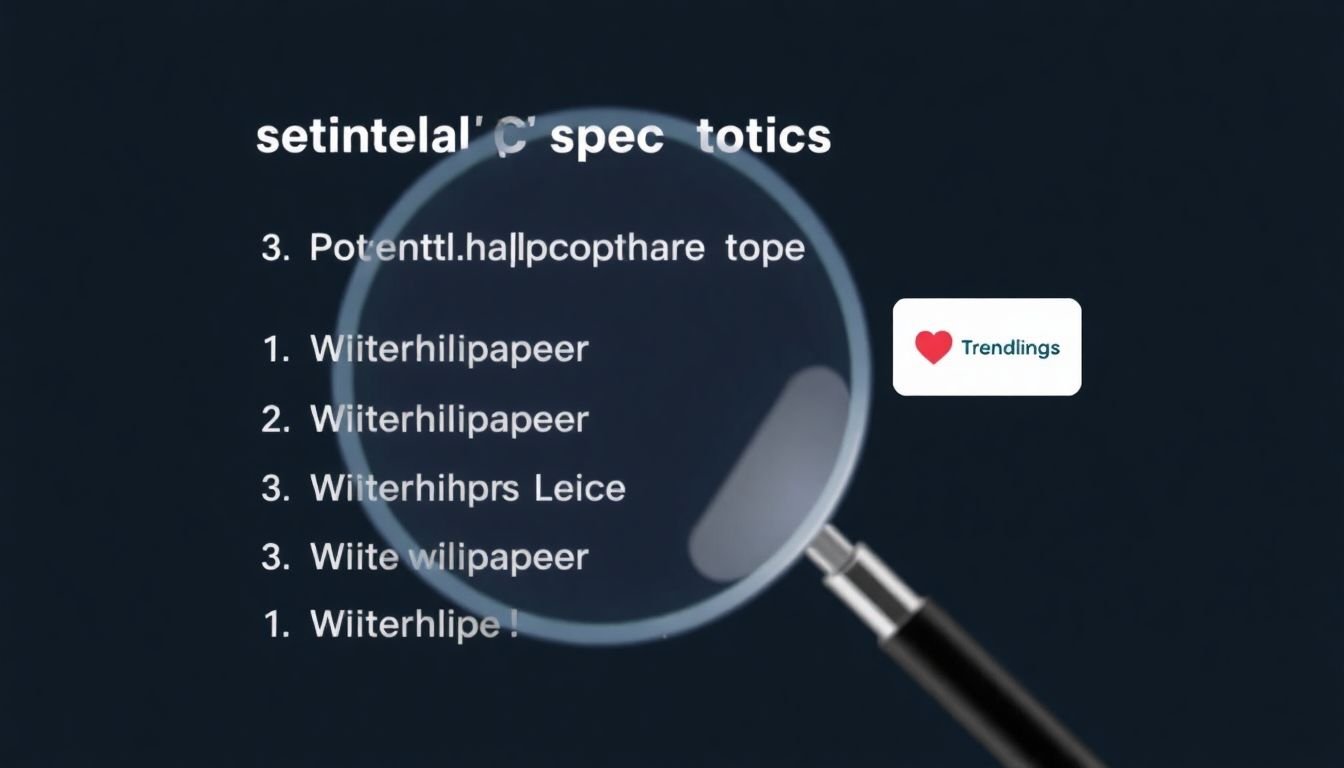
Choosing a Compelling Topic
Choosing a compelling topic is akin to finding the golden nugget in a vast, uncharted mine. It’s the spark that ignites curiosity, the hook that reels in your audience, and the glue that binds your content together. But how does one strike topic gold? Let’s delve into the art of selecting a topic that resonates with your target audience.
Firstly, understand your audience. Who are they? What keeps them up at night? What do they dream of achieving? Knowing your audience’s interests, needs, and pain points is the bedrock upon which your topic selection should rest. Once you’ve got a handle on that, you’re ready to start brainstorming.
Now, let’s talk about keyword research. It’s not just about stuffing your content with buzzwords (though, let’s face it, that’s tempting). Keyword research is about understanding what your audience is searching for. It’s about speaking their language. Tools like Google Keyword Planner, SEMrush, or Ahrefs can be your treasure maps, guiding you towards the most sought-after topics.
But wait, there’s more! Trends analysis is another crucial aspect of topic selection. What’s hot today might be yesterday’s news tomorrow. Tools like Google Trends can help you identify topics that are gaining traction, giving you a chance to hop on the bandwagon before it’s too crowded. But remember, trends come and go. It’s also important to choose topics that have staying power.
Lastly, don’t forget to consider your unique voice and perspective. Your audience didn’t come for a regurgitated Wikipedia article. They came for you. So, choose topics that allow you to shine, that let you share your expertise, your passion, your story.
In conclusion, choosing a compelling topic is a blend of art and science. It’s about understanding your audience, speaking their language, riding the wave of trends, and letting your unique voice shine. So, go forth, topic hunter! The golden nugget awaits.

Setting Clear Objectives and KPIs
Crafting a whitepaper is a significant investment of time and resources, so it’s crucial to define clear objectives to ensure it drives meaningful results. Clear objectives serve as your roadmap, guiding your research, writing, and promotion efforts. They help you stay focused, measure progress, and ultimately, determine the success of your whitepaper.
Before you dive into the writing process, ask yourself: What do I want to achieve with this whitepaper? Here are some common objectives and their corresponding Key Performance Indicators (KPIs) to consider:
- Objective: Establish thought leadership and brand awareness.
- KPI: Website traffic from whitepaper promotion (e.g., social media, email campaigns, etc.).
- KPI: Number of backlinks and mentions from industry publications and blogs.
- KPI: Social media engagement (likes, shares, comments, etc.) around the whitepaper.
- Objective: Generate leads and grow email list.
- KPI: Number of whitepaper downloads.
- KPI: Conversion rate of visitors to whitepaper download form.
- KPI: Quality of leads generated, measured by their engagement and fit with your target audience.
- Objective: Influence purchasing decisions.
- KPI: Sales qualified leads (SQLs) generated from whitepaper downloads.
- KPI: Revenue generated from SQLs.
- KPI: Customer satisfaction and net promoter scores (NPS) among those who engaged with the whitepaper.
To set these KPIs effectively, follow these steps:
- Be specific: Use quantifiable metrics to measure success (e.g., ‘increase website traffic by 20%’ instead of ‘drive more traffic’).
- Make them measurable: Ensure you can track and analyze your KPIs using tools like Google Analytics, social media analytics, or CRM software.
- Set a timeframe: Establish a clear start and end date for your whitepaper campaign to monitor progress and assess results.
- Regularly review and adjust: Periodically evaluate your KPIs and adjust your objectives or strategies as needed to maximize your whitepaper’s impact.
By defining clear objectives and setting relevant KPIs, you’ll be well on your way to creating a successful whitepaper campaign that drives tangible results for your business.

Crafting a Compelling Title and Executive Summary
Crafting a compelling title and executive summary is akin to writing a captivating headline and a concise news article. Both are crucial in driving downloads and engagement, as they are the first points of contact between your content and potential readers. Let’s dive into some tips to make these elements shine.
Crafting an Attention-Grabbing Title:
Be Clear and Concise:
- Use straightforward language to avoid confusion. Aim for under 20 words to keep it scannable.
Use Active Voice:
- Start with a verb to make your title dynamic and engaging. For example, ‘Transform’ instead of ‘Transformation’.
Include Keywords:
- Incorporate your main topic to help with search visibility and understanding.
Make it Intriguing:
- Pose a question, use a bold statement, or hint at a surprising fact to pique curiosity.
Test and Refine:
Don’t settle on the first title. Try out a few and see which one performs best.
Crafting a Concise, Informative Executive Summary:
Know Your Audience:
- Tailor your summary to the people you want to reach. What do they need to know?
Answer the 5 Ws:
- Who, What, When, Where, Why (and sometimes How) should be covered in your summary.
Highlight Key Findings:
- Share the most important takeaways or results from your content.
Use the Inverted Pyramid Style:
- Start with the most important information and gradually add details.
Keep it Short:
- Aim for one to three paragraphs, ideally under 500 words.
End with a Call to Action:
Encourage readers to delve into your content with a clear next step.
By mastering these tips, you’ll create titles and executive summaries that grab attention, provide valuable information, and entice readers to engage with your content.

Structuring Your Whitepaper: The Perfect Balance of Content and Design
Crafting a compelling whitepaper involves striking a harmonious balance between content and design. The ideal structure, much like a well-composed symphony, has three distinct movements: the introduction, the body, and the conclusion. Let’s delve into each section and explore how design can elevate your whitepaper’s readability and engagement.
The introduction, your whitepaper’s overture, should be a captivating melody that sets the tone for the entire piece. It should succinctly introduce the problem your whitepaper aims to solve, the solution it proposes, and the benefits it offers. Design plays a pivotal role here, with clear typography, ample white space, and engaging visuals drawing readers in and setting the stage for the main content.
The body, the symphony’s crescendo, is where you delve deep into the subject matter. It should be a well-structured composition, with each section flowing logically into the next. Here’s a suggested structure:
- Problem Statement: Clearly define the issue your solution addresses.
- Solution: Explain your proposed solution in detail, using diagrams, charts, or infographics to illustrate complex concepts.
- Market Opportunity: Describe the market need for your solution and its potential impact.
- Business Model: Outline how your solution will generate revenue.
- Competitive Landscape: Analyze your competitors and explain how your solution stands out.
- Traction: Highlight any partnerships, customers, or milestones that validate your solution.
Design can enhance readability here by using headings, bullet points, and consistent formatting to break up text and guide readers through the content.
The conclusion, your whitepaper’s finale, should be a satisfying resolution that leaves readers eager to learn more. Summarize your solution, reiterate its benefits, and provide clear next steps for interested readers. Design can reinforce your message here with a clear call-to-action, perhaps accompanied by a striking visual.
In essence, structuring your whitepaper is about creating a cohesive narrative that guides readers from problem to solution. Design, when used judiciously, can amplify this narrative, making your whitepaper not just informative, but also engaging and memorable.

Developing High-Quality Content: Research, Writing, and Editing
Developing high-quality content is a multifaceted process that involves meticulous research, compelling writing, and diligent editing. Let’s delve into each of these stages to create content that resonates with your audience and maintains a consistent brand voice.
The first step in developing high-quality content is conducting thorough research. This involves understanding your target audience, identifying relevant topics, and gathering accurate information. Start by defining your audience and their interests. This will help you choose topics that they find valuable and engaging. Once you have your topic, it’s time to gather information. Use reliable sources such as academic journals, industry reports, and expert opinions to ensure the accuracy of your content. Remember, the more you know about your topic, the more confidently you can write about it.
Once you have your research, it’s time to start writing. Engaging content is not just about providing information; it’s about how you present it. Here are some tips to make your writing engaging:
- Use a conversational tone to connect with your audience.
- Tell stories to make your content relatable and memorable.
- Use vivid descriptions and analogies to paint a picture in your reader’s mind.
- Break up your content with subheadings, bullet points, and images to make it scannable.
After you’ve written your content, it’s time to edit. Editing is not just about correcting grammar and punctuation, although that’s important. It’s also about ensuring your content is clear, concise, and accurate. Here are some steps to help you edit effectively:
- Read your content aloud to ensure it flows well and is easy to understand.
- Cut unnecessary words and phrases to make your content concise.
- Check all facts and statistics to ensure they are accurate.
- Proofread for any grammatical or punctuation errors.
Lastly, maintaining a consistent brand voice is crucial. Your brand voice is the personality of your brand. It’s how you communicate with your audience. Consistency helps build recognition and trust. To maintain a consistent brand voice, start by defining it. What kind of tone do you want to use? Formal, informal, friendly, authoritative? Once you’ve defined it, stick to it. This will help your audience recognize your content and connect with your brand.

Designing for Impact: Visual Elements and Formatting
In the realm of digital content, the adage ‘a picture is worth a thousand words’ holds true, but it’s not just about quantity, it’s about quality and context. Visual elements like charts, graphs, and images play a pivotal role in enhancing the reader’s experience, making complex data digestible, and transforming plain text into an engaging narrative. They serve as visual anchors, guiding the reader’s eye through the content, and providing moments of respite from the textual onslaught.
Charts and graphs are powerful tools for communicating data. They allow readers to grasp information at a glance, identify trends, and make comparisons. However, not all charts are created equal. The choice of chart type depends on the data you’re presenting. Bar charts are great for comparing discrete categories, while line graphs are perfect for showing trends over time. Pie charts, despite their ubiquity, should be used sparingly, as they can be less effective in conveying precise data points.
Images, on the other hand, can evoke emotions, tell stories, and provide context. They can illustrate a point, add a human touch, or simply make the content more appealing. But remember, not all images are suitable. They should be relevant, high-quality, and used judiciously to avoid distracting from the main content.
Formatting is the secret sauce that ties everything together. It’s about creating a visual hierarchy, guiding the reader’s eye through the content. This can be achieved through font sizes, colors, and styles. Headings should be large and prominent, subheadings slightly smaller, and body text easy to read. White space is your friend; it makes the content breathable and less daunting.
Lists are another powerful formatting tool. They break up text, making it easier to scan and digest. They can be used to present steps, tips, or key points. But remember, too many lists can make the content feel disjointed, so use them judiciously.
In conclusion, visual elements and formatting are not just about making content look good, they’re about making it work. They enhance the reader’s experience, making complex information accessible and engaging. So, the next time you’re creating content, remember, it’s not just about the words, it’s about the whole package.
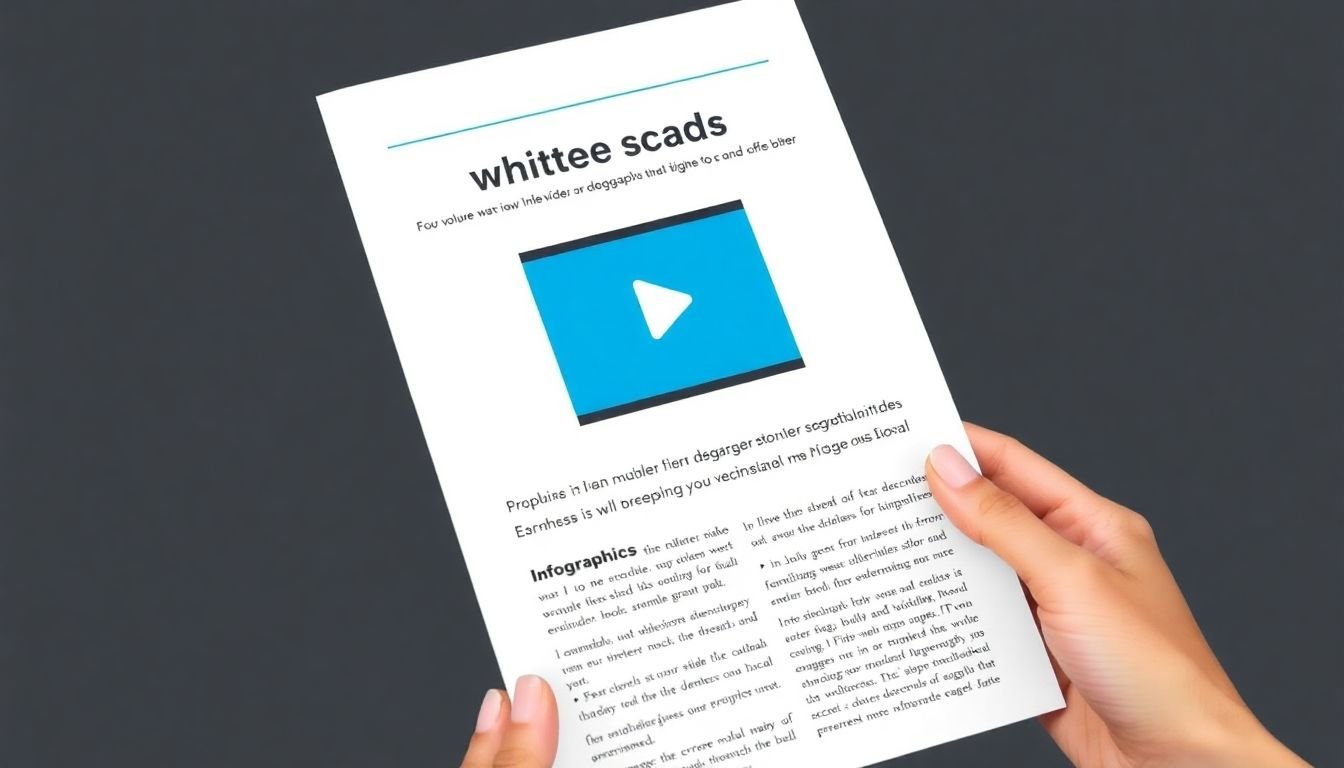
Leveraging Multimedia: Videos, Infographics, and Interactive Elements
In the digital age, whitepapers are no longer confined to static text and images. Incorporating multimedia elements can significantly enhance the user experience, making your whitepaper more engaging, informative, and shareable. Let’s delve into the benefits of leveraging multimedia and explore some effective elements to create.
Firstly, multimedia caters to diverse learning styles. While some readers prefer textual information, others absorb content better through visuals or interactive elements. By incorporating videos, infographics, and interactive elements, you ensure that your whitepaper appeals to a wider audience.
Videos, for instance, can provide in-depth explanations, demonstrations, or interviews that would be difficult to convey through text alone. They can also add a personal touch, making your whitepaper more relatable. To create effective videos, keep them concise, high-quality, and relevant to your topic. Use clear, concise language and ensure they’re accessible to all users, including those with hearing impairments by providing captions.
Infographics are another powerful tool. They simplify complex data, making it easily digestible and visually appealing. To create compelling infographics, start with a clear, concise message. Use a clean, uncluttered design, and ensure the visuals align with the data. Tools like Canva, Piktochart, or Adobe Illustrator can help you create professional-looking infographics.
Interactive elements, such as quizzes, polls, or clickable maps, encourage reader participation and increase engagement. They can also provide valuable insights into reader preferences and behaviors. To create these elements, use interactive content platforms like Outgrow, Ceros, or ThingLink. Ensure the interactivity aligns with your content and provides value to the reader.
In conclusion, multimedia elements can transform your whitepaper into an immersive, engaging experience. By catering to diverse learning styles and providing interactive, informative content, you’ll create a whitepaper that stands out and resonates with your audience.

Optimizing for SEO: Improving Whitepaper Discoverability
In today’s digital landscape, creating a compelling whitepaper is just the first step. To ensure your hard work reaches the right audience, optimizing for SEO is not just beneficial, but crucial. SEO, or Search Engine Optimization, is the process of improving your whitepaper’s visibility on search engine results pages (SERPs). By optimizing your whitepaper for search engines, you’re increasing the likelihood that your target audience will find and engage with your content.
So, how do you optimize your whitepaper for SEO? Let’s dive into a step-by-step guide:
- Keyword Research: Identify the primary and secondary keywords relevant to your whitepaper. These should be the terms your target audience is likely to use when searching for information related to your topic. Tools like Google Keyword Planner, SEMrush, or Ahrefs can help with this.
- Title and Meta Description: Incorporate your primary keyword into the title and meta description of your whitepaper. These elements appear on SERPs and can significantly impact click-through rates. Make sure they’re compelling and accurately represent your content.
- Content Optimization: Naturally incorporate your target keywords throughout your whitepaper. Ensure they’re used in headings, subheadings, and within the body of your text. However, avoid keyword stuffing, as this can negatively impact your SEO efforts and deter readers.
- Internal Linking: Link to other relevant pages or whitepapers on your website. This helps search engines understand the context and relevance of your content, and can improve your whitepaper’s ranking.
- External Link Building: Earn backlinks from high-authority websites. This can be achieved through guest blogging, collaborations, or mentions in industry-related articles. Backlinks signal to search engines that your content is valuable and relevant.
- Structured Data: Use schema markup to help search engines understand the content of your whitepaper better. For instance, you can use the ‘Article’ schema to provide additional context about your content.
Remember, SEO is an ongoing process. It’s important to regularly monitor your whitepaper’s performance using tools like Google Search Console and Google Analytics. This will help you understand what’s working and what needs improvement. By optimizing your whitepaper for SEO, you’re not just making it more visible, you’re making it more discoverable to those who matter most
- your target audience.
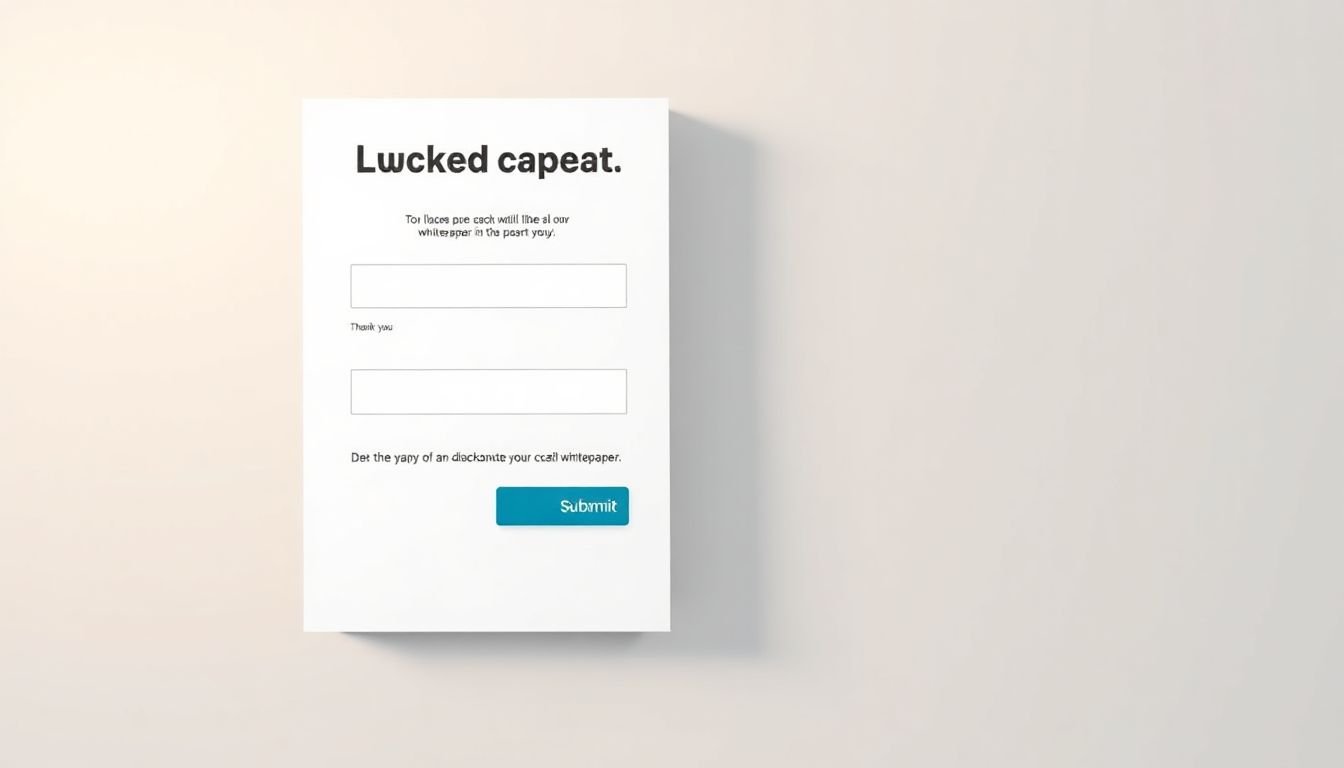
Gating Your Whitepaper: Balancing Accessibility and Lead Generation
Gating your whitepaper, a strategic move to control access in exchange for valuable user data, presents a double-edged sword. On one hand, it’s an effective lead generation tactic, allowing you to collect crucial information about your audience. On the other hand, it might deter some potential readers who are unwilling to part with their details or find the process too intrusive. The key lies in balancing accessibility and lead generation.
A well-crafted landing page and form can significantly enhance your lead generation efforts. First, ensure your landing page clearly communicates the value of your whitepaper. Highlight its unique insights, data, or solutions to pique the reader’s interest. Use compelling visuals and concise, persuasive copy to drive home the point.
Now, let’s talk forms. Keep it simple and relevant. Ask only for information that’s absolutely necessary. Long, complex forms can be a turn-off for users. Here’s a tip: use progressive profiling. Start with basic information like name and email, and then, in subsequent interactions, ask for more detailed data. This way, you’re not overwhelming users from the get-go.
Here’s a simple, effective form structure:
- First Name
- Last Name
- Email Address
- Job Title (optional, but helpful for segmentation)
Lastly, make the call-to-action (CTA) button prominent and compelling. Use action-oriented language like ‘Download Now’, ‘Get Your Copy’, or ‘Unlock Your Free Whitepaper’. Make it clear and enticing to encourage users to click.
In conclusion, while gating your whitepaper can be a powerful lead generation tool, it’s crucial to strike a balance between accessibility and data collection. A well-designed landing page and form can maximize your lead generation efforts, but remember, the key is to provide value and respect your audience’s time and privacy.
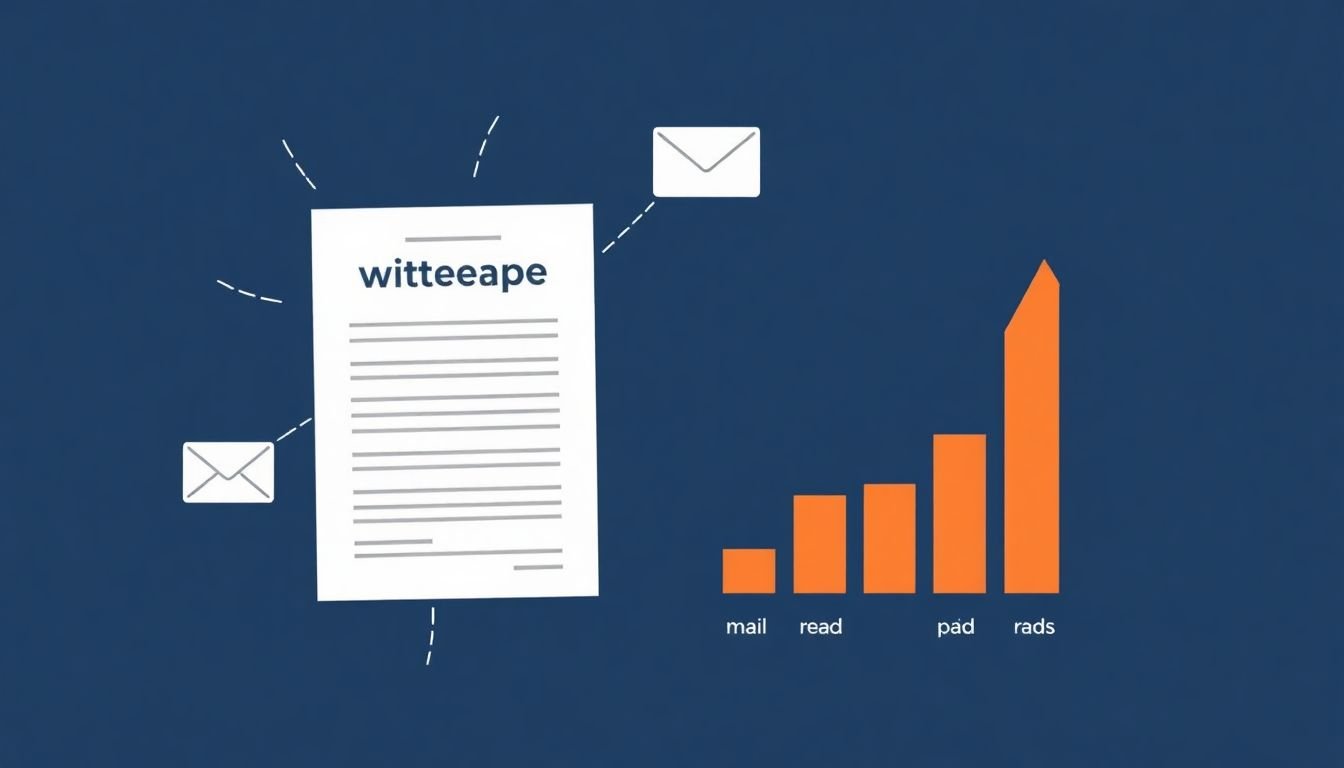
Promoting Your Whitepaper: Distribution Channels and Strategies
Distributing your whitepaper effectively is crucial to reach your target audience and generate buzz around your project. Let’s explore various channels and strategies to promote your whitepaper.
Email Marketing: This tried-and-true method allows you to reach out directly to your audience. Start by building an email list through sign-up forms on your website or landing page. Segment your list based on interests and behaviors to send personalized content. Here are some tips:
- Craft a compelling subject line to boost open rates.
- Keep the email concise and focused on the whitepaper’s value.
- Include a clear call-to-action (CTA) button leading to the whitepaper.
Social Media: Platforms like LinkedIn, Twitter, and Facebook can help you reach a wider audience. Share your whitepaper on relevant groups and hashtags. Consider these strategies:
- Create eye-catching visuals to accompany your posts.
- Engage with your audience by responding to comments and messages.
- Use platform-specific features like LinkedIn’s ‘Articles’ or Twitter’s ‘Threads’ to share snippets and teasers.
Paid Advertising: Paid promotions can help you reach a larger audience quickly. Here are some options:
- Google Ads: Target users searching for relevant keywords.
- Social Media Ads: Reach users based on demographics, interests, and behaviors.
- Native Ads: Promote your whitepaper on relevant websites and blogs.
When creating your promotion strategy, consider the following:
1. Know Your Audience: Understand who you’re targeting and where they hang out online.
2. Set Clear Goals: Define what success looks like (e.g., downloads, sign-ups, shares).
3. Test and Optimize: Monitor performance and adjust your strategy based on data.
4. Repurpose Content: Turn whitepaper snippets into blog posts, infographics, or videos to maximize reach.
5. Engage with Your Audience: Respond to comments, share user-generated content, and foster a community around your project.
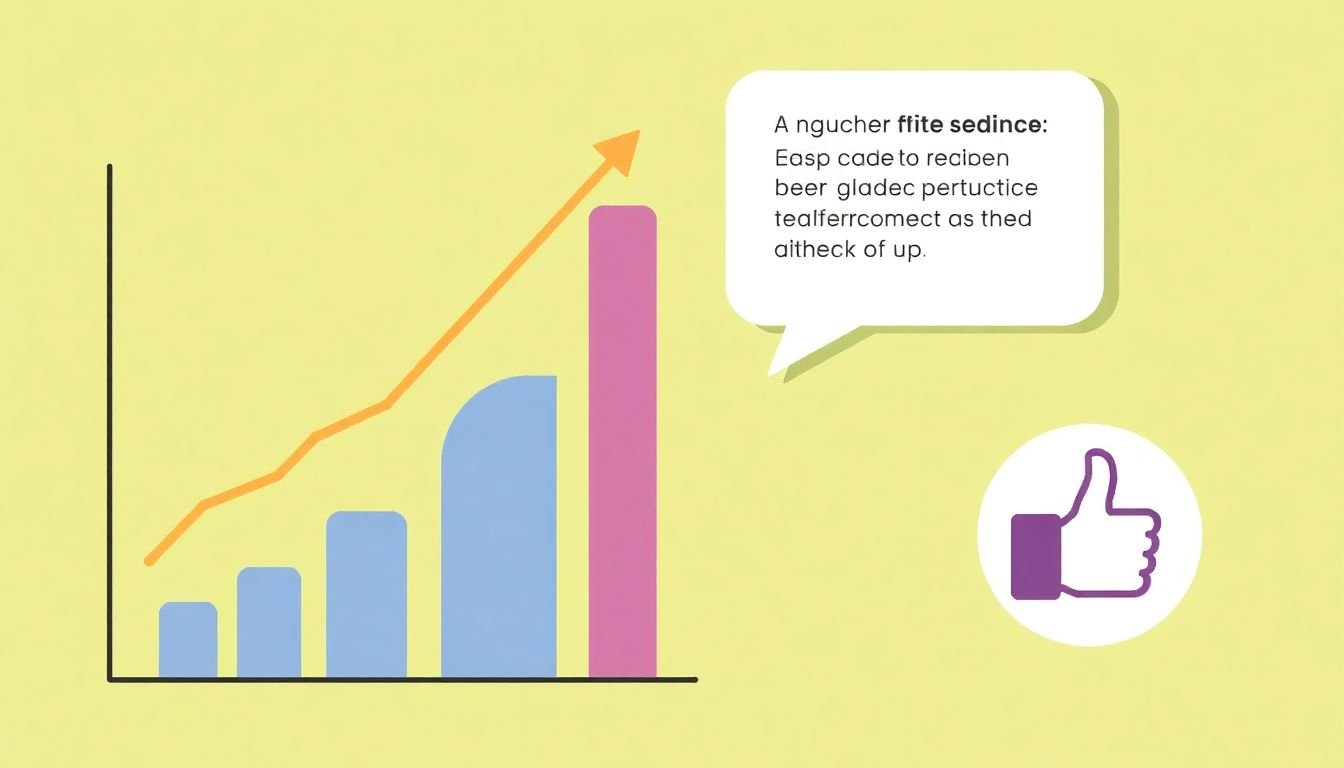
Measuring Success: Tracking Performance and Gathering Feedback
Measuring success in the realm of whitepapers is not merely about counting downloads or shares, but about understanding the impact and value of your content. Tracking performance metrics and gathering reader feedback are two indispensable tools for this purpose. Let’s delve into the importance of these processes and explore how to leverage the insights they provide to improve future whitepapers.
The importance of tracking performance metrics cannot be overstated. These metrics serve as your content’s vital signs, providing a pulse on its health and effectiveness. They can reveal a wealth of information, from the popularity of certain topics to the most engaging formats. For instance, knowing which sections are most read can help you understand what resonates with your audience, while data on bounce rates can indicate areas of confusion or disinterest. To track these metrics effectively, consider using tools like Google Analytics, which can provide detailed insights into user behavior.
Gathering reader feedback, however, offers a more qualitative perspective. While metrics provide quantitative data, feedback offers personal, subjective insights. It can reveal not just what readers liked or disliked, but why. This can be invaluable for understanding your audience’s needs and expectations. Surveys, interviews, and social media engagement can all be used to gather this feedback.
Once you’ve collected your data, it’s time to analyze it. This involves more than just looking at the numbers or reading the comments. It’s about drawing connections, identifying patterns, and understanding the story your data is telling. Here are some steps to guide you:
- Start by setting clear goals for what you want to learn from your data.
- Use visualizations like charts and graphs to make your data more accessible and easier to understand.
- Look for trends and patterns. What’s working well? What’s not? What can you learn from the differences?
- Compare your findings to your initial goals. Are you meeting them? If not, why not?
Finally, use these insights to inform your future whitepapers. If you find that readers are more engaged with certain topics, make them a bigger part of your next paper. If feedback reveals a need for more practical examples, make sure to include them. Remember, the goal is not just to track and gather, but to learn and improve. By continually refining your approach based on performance metrics and reader feedback, you can ensure that your whitepapers are always evolving to better serve your audience.
FAQ
What is a whitepaper and why are they important in B2B marketing?
Who is the target audience for a whitepaper in B2B marketing?
What are the key components of a compelling whitepaper?
- **Title and Subtitle**: Clear, concise, and attention-grabbing.
- **Executive Summary**: A brief overview of the entire whitepaper.
- **Introduction**: Sets the stage for the topic and provides context.
- **Body**: In-depth analysis, data, insights, and recommendations, structured into logical sections.
- **Conclusion**: Summarizes the main points and reiterates the key takeaways.
- **Call to Action (CTA)**: Encourages readers to take the next step, such as downloading a related resource or contacting your business.
- **Design and Formatting**: Clean, professional layout with clear headings, bullet points, and visuals to enhance readability.
How long should a whitepaper be?
What are some effective whitepaper topics for B2B marketing?
- Industry trends and predictions
- Best practices for specific processes or technologies
- Case studies demonstrating successful implementations
- Comparative analysis of competing solutions
- How-to guides for complex tasks or tools
- Original research or surveys providing unique insights
How can I ensure my whitepaper provides value to my audience?
- **Understand Your Audience**: Conduct thorough research to identify their needs, pain points, and interests.
- **Choose a Relevant Topic**: Select a subject that addresses your audience’s needs or challenges.
- **Provide In-depth Insights**: Offer unique, valuable information that goes beyond what’s already available online.
- **Use a Clear and Engaging Structure**: Organize your content in a logical, easy-to-follow format.
- **Include Actionable Takeaways**: Provide practical advice or recommendations that readers can apply in their own situations.
- **Test and Refine**: Gather feedback from your audience and make improvements as needed.
How can I promote my whitepaper to maximize its impact?
- **Email Marketing**: Announce the whitepaper to your email list and encourage them to share it with their colleagues.
- **Social Media**: Share the whitepaper on your business’s social media profiles and engage with your audience by asking questions or hosting a related discussion.
- **Content Syndication**: Publish the whitepaper on relevant third-party platforms, such as SlideShare, LinkedIn, or industry websites, to reach a wider audience.
- **Paid Advertising**: Consider using paid ads on search engines, social media, or industry websites to reach decision-makers who are not already in your network.
- **Webinars and Events**: Host a webinar or present at industry events to discuss the whitepaper’s findings and engage with your audience.
- **Gated Download**: Require visitors to provide their contact information to access the whitepaper, allowing you to build your lead database.
How can I measure the success of my whitepaper?
- **Downloads**: The number of times the whitepaper has been downloaded.
- **Unique Visitors**: The number of unique individuals who have accessed the whitepaper.
- **Conversion Rate**: The percentage of visitors who download the whitepaper or take another desired action, such as filling out a form or scheduling a consultation.
- **Engagement**: The average time spent reading the whitepaper, the number of pages viewed, or the percentage of readers who complete the whitepaper.
- **Shares and Mentions**: The number of times the whitepaper is shared on social media or mentioned in industry publications.
- **Lead Quality**: The percentage of leads generated by the whitepaper that convert into customers.
Regularly review these KPIs to assess the whitepaper’s performance and identify opportunities for improvement.